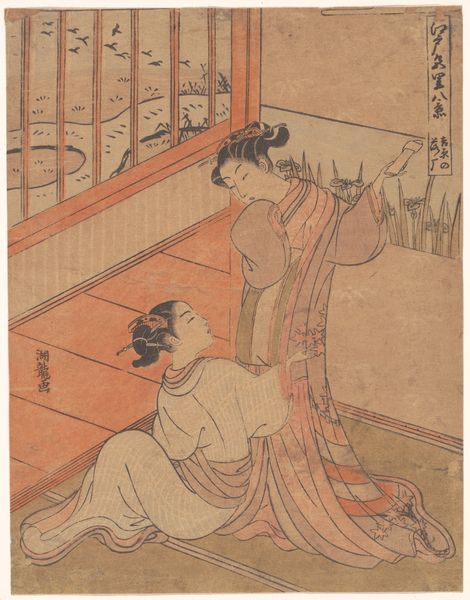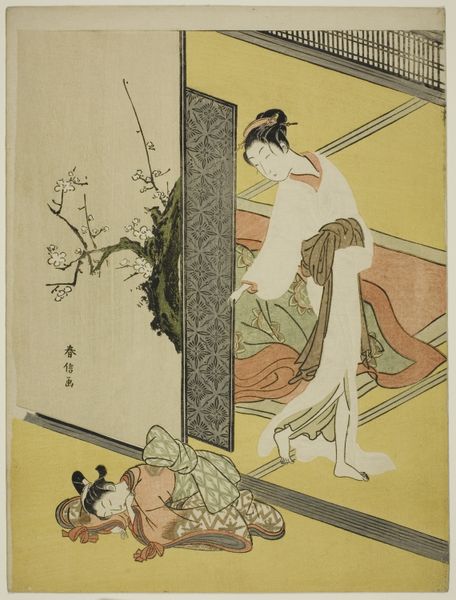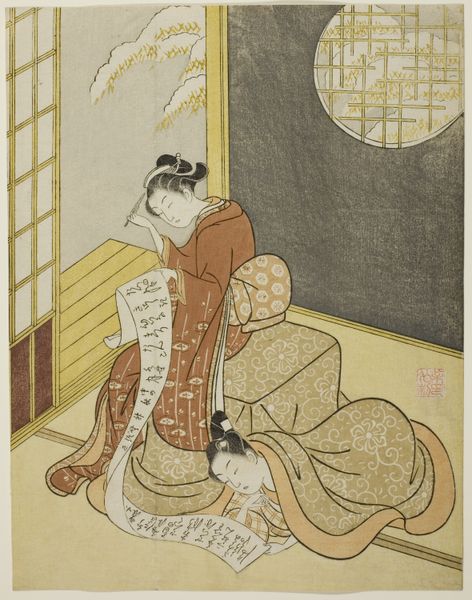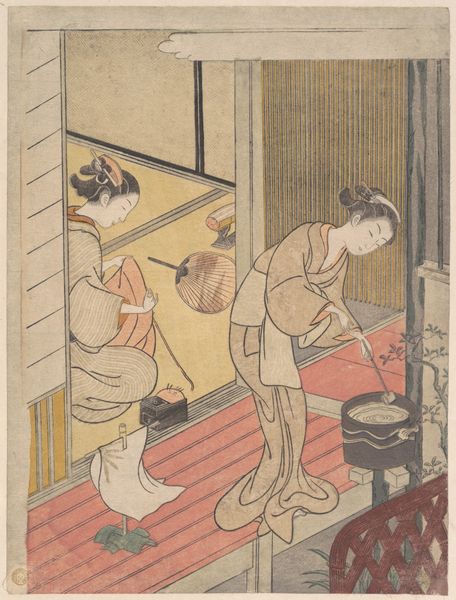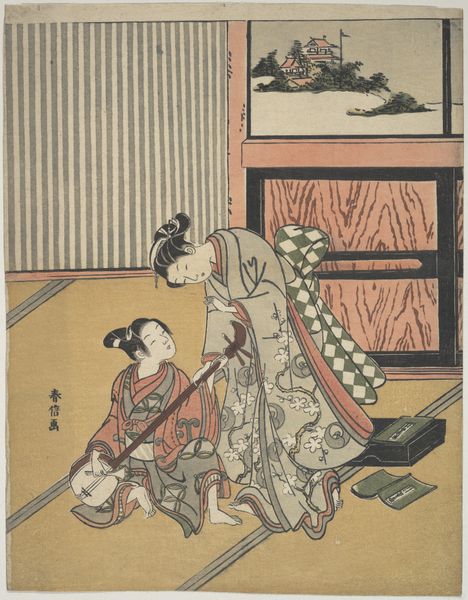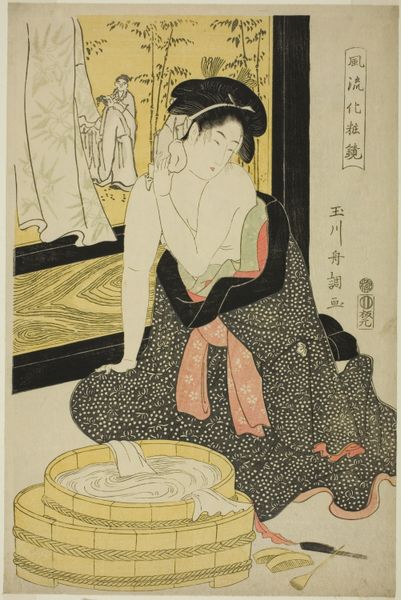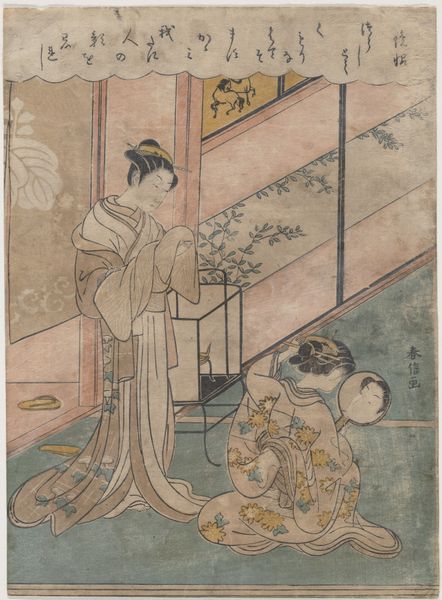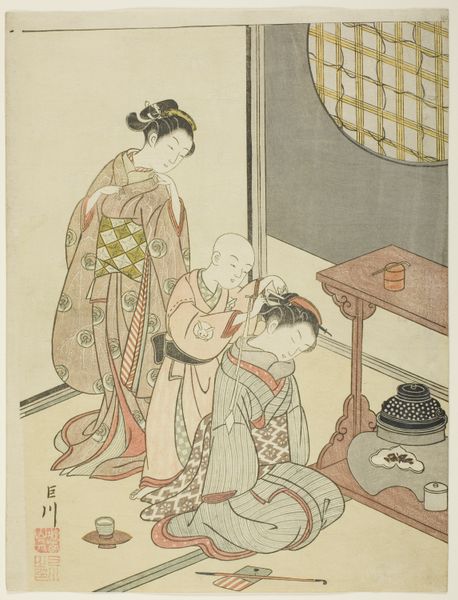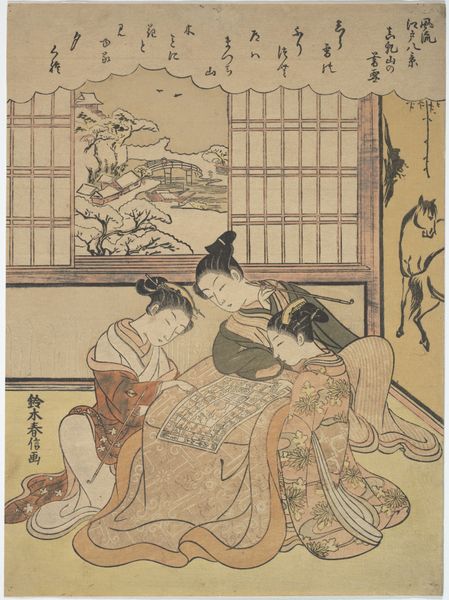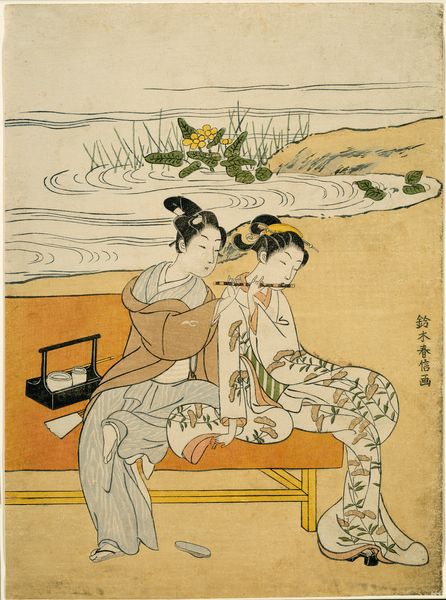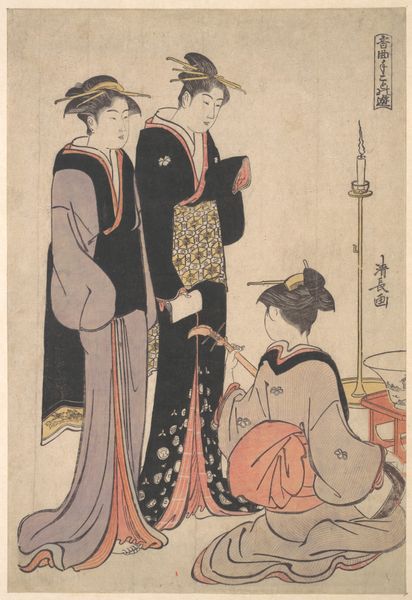
print, woodblock-print
#
portrait
# print
#
asian-art
#
sketch book
#
ukiyo-e
#
woodblock-print
#
genre-painting
#
erotic-art
Dimensions: 10 1/4 x 7 1/4 in. (26 x 18.4 cm)
Copyright: Public Domain
Curator: Welcome. We are standing before "The Gossips," a work created sometime between 1757 and 1777 by Suzuki Harunobu. It’s currently held in the collection of the Metropolitan Museum of Art. Editor: A hushed intimacy pervades this print. It’s delicate, almost watercolour-like in its execution, despite being a woodblock. The restricted palette heightens the quiet mood. Curator: Indeed. Notice how Harunobu organizes the composition with an eye to simplified shapes. The rectangular lines of the room, contrasted against the curvilinear forms of the figures create an interplay of hard and soft edges that pleases the eye. Editor: For me, the fan held by the figure on the left isn't just an object; it is a prop that is suggesting coquettish secrets are being revealed. The intimacy suggested has a charged quality, an exchange of scandalous knowledge. Curator: That may well be; still I see that fan fulfilling a visual purpose as well—a geometric motif that echoes and offsets the round forms and the bent bodies of the two figures. Consider too, the pattern of the women's robes, full of botanical details, versus the minimalist lines that describe the architecture. Editor: Botanical patterns in that period also held symbolic meanings related to feminine virtues or seasonal events. What at first seems simply decorative can reveal layers of meaning relating to the hopes, aspirations, or even restrictions placed on women of the era. It adds to the charged feeling of the picture. Curator: Agreed, there's certainly more here than pure aesthetics. The way the artist depicts depth using such subtle gradations of colour—particularly in the rendering of the clothing—is technically masterful and creates an incredible formal complexity in spite of its subdued palette. Editor: Understanding the imagery adds a layer of intrigue, placing the image into the social and cultural life of the Edo period. Gossip, especially between women, might’ve been one way of sharing power and solidarity in the community. Curator: In seeing the interplay between structure and signification, the work opens to deeper reflection on art and context, inviting diverse paths to knowledge. Editor: So, a deeper experience comes from understanding how signs of daily life have their echoes still today, to better see ourselves through those figures sharing secrets in old Japan.
Comments
No comments
Be the first to comment and join the conversation on the ultimate creative platform.



